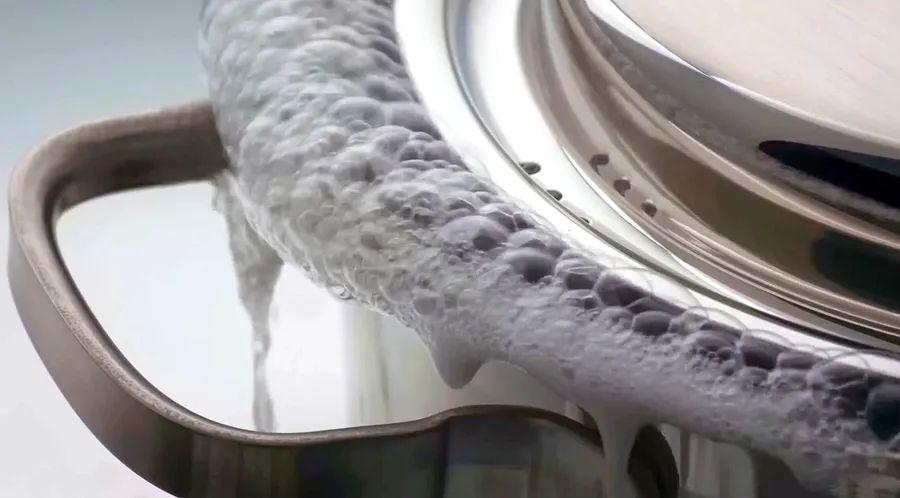Why Does My Rice Pot Always Overflow?

No matter the size of the pot, or the amount of rice and water, one thing is for sure in my kitchen: the pot will inevitably bubble over, creating a starchy mess both on the pot and around the burner.
That mess quickly turns into a hard, stubborn crust. I've lost count of how many times I've opted for 'riceless' meals just to avoid the hassle of cleaning up.
So why does this keep happening? Is there anything that can be done about it, aside from investing in a rice cooker?

Why Does Your Rice Overflow?
Rice is covered in a surprising amount of starch. When cooked in water, these starches create large, frothy bubbles that are pushed up and out of the pot by steam.
The rice needs plenty of liquid to cook properly, but the steam also wants to escape. Keeping the lid on helps prevent too much evaporation. A larger pot may just create bigger bubbles or may be too wide for the liquid to properly cover the rice. This leads to a starchy, bubbly mess and can result in rice that’s either undercooked or overcooked.
How to Stop Your Rice from Boiling Over
Many common solutions (like adding oil or covering the pot with foil) either don't work or are too much of a hassle to make cooking rice worthwhile (think long soaks or multiple rinses). This foolproof method is quick, easy, and effectively eliminates those pesky bubbles.
Step 1: Give your rice a quick rinse. Place the dry rice in a mesh strainer and rinse it under cold water for 30 seconds, stirring constantly with your fingers.
Step 2: Cook on very low heat. Add the rinsed rice to boiling water, cover, and reduce the heat to low. Your rice may take a few extra minutes to cook, but you'll have far fewer bubbles.
Step 3: Finish with a towel steam. When most of the liquid has evaporated, turn off the heat, place a tea towel under the lid, and let the rice sit for 5 to 10 minutes. The towel will absorb the starchy steam (no more sticky residue on the lid!) and prevent the rice from overcooking.
Check out our complete rice guide for everything you need to know, from rice varieties to cooking tips and recipes.

1

2

3

4

5
Evaluation :
5/5